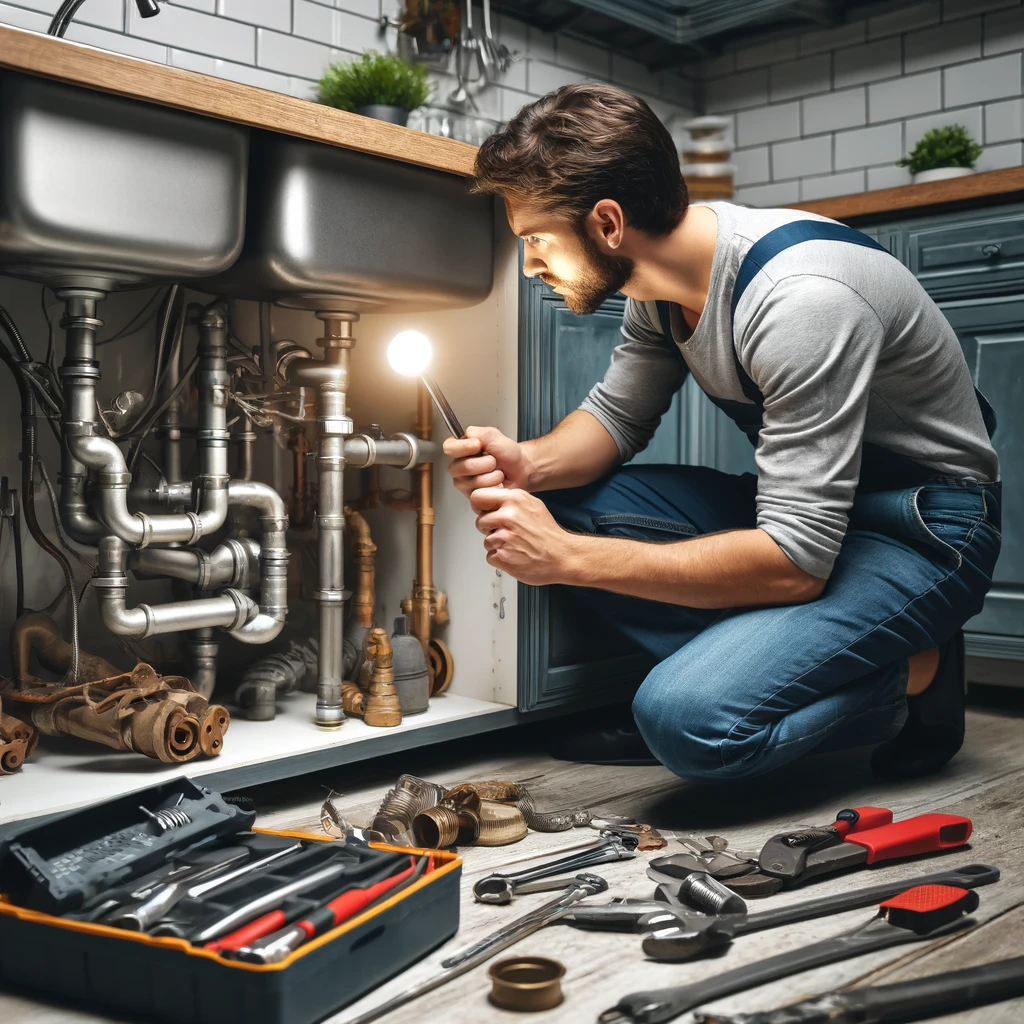A stable and consistent water supply is one of the most important conditions for comfortable home living. However, centralized water supply systems often operate intermittently, leading to significant drops in water pressure or interruptions in water supply. This creates certain inconveniences. A storage tank can solve this problem. This backup water supply device maintains a sufficient supply of water and ensures its delivery in the event of insufficient water pressure or a complete shutdown.
Storage tanks are also installed in homes with independent water supplies. In this case, a reserve tank is needed to create a reserve, ensuring a stable water supply even when the well or borehole output is low. Additionally, an expansion tank can help maintain the water supply during power outages or when the pumping station is turned off.
To enjoy the benefits of a stable water supply provided by such devices, a homeowner should know how to select and connect a storage tank.

Types of equipment
They are classified according to several distinctive features. Depending on the material, they are either plastic or metal.
Plastic models are made from the following polymers:
- polyvinyl chloride;
- polypropylene;
- cross-linked polyethylene.
Metal storage tanks are made from stainless steel or galvanized carbon steel. Carbon steel models have a polymer coating for corrosion protection. The interior surface can be protected with a ceramic coating.
Storage tanks come in cylindrical, round, or rectangular shapes. Other shapes are also available. For example, a cone-shaped tank can be used in situations where rapid and complete drainage is required.
An important classification feature is volume. Small-volume models are available, with a capacity of up to 50 liters. They are used to store a small amount of water and provide a supply during short-term water supply interruptions. These models are suitable for houses or apartments occupied by 2-3 people, and can also be used in summer cottages. Large-capacity tanks hold up to 500 liters or more. Models of this type can supply a home with water even during extended water supply interruptions.
Depending on their design, water storage tanks come in open and closed designs. Open-design models feature a neck through which water is filled. Water is dispensed through a closed-design pipe—a diaphragm-type hydraulic accumulator. This device automatically maintains pressure in the domestic water supply. Such models, such as Stout expansion tanks, can be used not only in water supply networks but also in closed systems, including for autonomous heating.
Operating principle
The operating principle depends on its design.
The simplest models are open tanks. These tanks are simply filled with water, and water is then drawn off as needed. The tank can be installed with a top or bottom connection. In the first case, the tank is mounted above the water intake points—on the top floor or in the attic of the house. Water is drawn from the tank by gravity, so the greater the difference in height between the storage tank and the faucet, the greater the pressure.
Open-type equipment can also be installed with a bottom connection. In this case, the tank is installed below or at the same level as the water intake point. Water is drawn from the tank by a pump.
The membrane type is more complex. It is a sealed metal tank, the interior of which is divided into two compartments by an elastic membrane. One compartment is designed to be filled with water, while the other contains air. When connected to the water supply or the independent water supply pump is turned on, the tank fills with water. As the liquid fills, it presses on the membrane, gradually decreasing the volume of the air chamber and increasing the air pressure within it. When the air pressure on the membrane and the pressure in the water supply system become equal, equilibrium is reached, and the tank stops filling with water. When the pressure in the water supply system drops, the air compresses the membrane. As a result, water is forced out of the tank by the membrane and is pumped under pressure to the water intake points. When normal pressure in the water supply system is restored, water reenters the tank until the internal pressure reaches equilibrium.
Features of selection
The choice depends on the volume, its placement options, the required functions, and the owner’s budget.
If the house has several floors or an attic with sufficient space for a tank of the required capacity, an open-type tank with a top connection can be installed. This will be less expensive than a hydraulic accumulator and will not require additional pumping equipment for water distribution. However, to create sufficient pressure for comfortable use, the tank must be elevated to a significant height. To increase the pressure by 1 bar, the tank must be raised to a height of 10 meters. If installed in an attic, the equipment will need to be insulated. If installing a storage tank at a sufficient height is not possible, a bottom connection is used. The tank is usually placed in a utility room or basement. A pump is installed to supply water to consumers.
Diaphragm-type expansion tanks are more expensive than open-type models. However, this equipment automatically regulates the pressure and flow of water in the system. The installation height is not important, and no pumping equipment is required.
The size of the storage tank is selected based on the number of people living in the house. On average, one person requires 30-50 liters per day. When choosing the size, consider the operation of the central or independent water supply. If prolonged interruptions are expected, it is recommended to provide a reserve of 2-3 days’ supply.
Installation and connection to the water supply
The tank is installed on a site with sufficient load-bearing capacity. The foundation must be designed to support a load at least 1.5 times the weight of the full tank. If necessary, a concrete foundation structurally connected to the house’s foundation or a metal frame made of profiled pipe is prepared.
Connection in houses with a centralized water supply system
The storage tank is connected via a check valve, which prevents water from backing up into the pipeline when the central water supply is shut off.
A tank with a top connection is mounted at a sufficient height. The top connection of the tank is connected to the water supply network. The outlet connection is connected to the in-house plumbing system via a shut-off valve. A relief connection, located slightly below the inlet, is also required. This connection is necessary to drain excess water if the storage tank overflows. This connection is connected to the sewer system. The tank’s full state is monitored using a float valve.
The installation of a tank with a bottom connection differs from the described option in that a pump is installed at the outlet of the tank to raise the water level. The pump is connected via a pressure switch, which ensures its automatic activation when needed.
Installation of a diaphragm-type hydraulic accumulator is the simplest. It is connected to the water supply system via a valve using one pipe. The second pipe goes to the in-house plumbing system. Before turning on, adjust the pressure in the air chamber. It should match the normal water supply pressure, taking into account any fluctuations.
Connection with autonomous water supply
In the case of an independent water supply system, installation with a top connection is based on the principle of a water tower. The tank is installed at a sufficient height. Water is supplied from a well or borehole pump directly to the storage tank, from where it is distributed to consumers. If the pump is interrupted, water is refilled from the storage tank. Bottom connections are rarely used in independent systems, as they do not provide adequate power during power outages.


